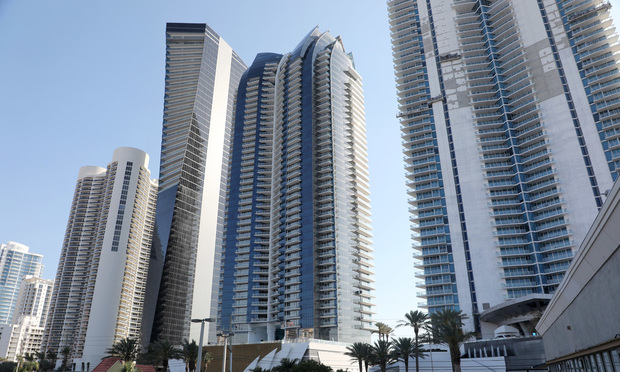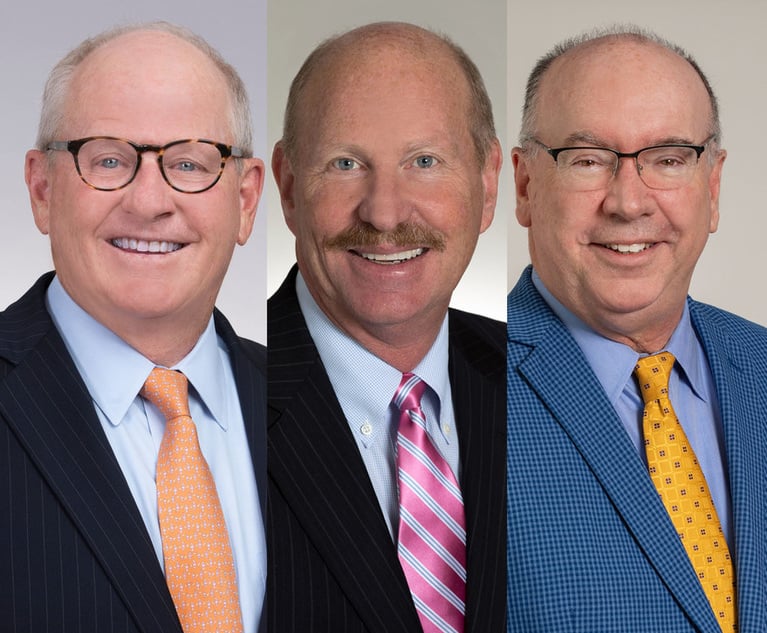South Florida Mortgage Applications Denied at Higher Rate than Most of US
About 11 percent of mortgage applications are denied across the region, which is a higher rate than the 8 percent national average.
April 30, 2018 at 01:44 PM
4 minute read

Homebuyers in South Florida get turned down for mortgages at a higher rate than most other metropolitan areas in the U.S., a new study shows.
About 11 percent of mortgage applications in 2016 were rejected across the region, which is higher than the 8 percent national average.
LendingTree LLC — a Charlotte, North Carolina-based mortgage broker — studied more than 10 million mortgage applications for condominiums and single-family homes in 2016 in the 50 biggest U.S. metropolitan areas. The study looked at loans provided by traditional and nontraditional lenders.
The Birmingham-Hoover area in Alabama led the nation with the highest rejection rate of 13 percent, trailed by the New Orleans-Metairie area and Memphis, each at 12 percent, and Oklahoma City, which tied South Florida, according to LendingTree.
The South Florida residential real estate industry has been booming in recent years with developers focusing on luxury high-rise condos east of Interstate 95. With growth in this product, which is particularly popular with foreign buyers, an affordable housing crisis has enveloped most of the region, where locals are being priced out, studies show.
About a third of renters in each Miami-Dade and Broward counties are paying more than half of their income on rent, according to a study from Florida International University. One-third is considered a benchmark for housing costs.
The top reason for rejected mortgage applications in South Florida was an unfavorable debt-to-income ratio, or insufficient income for the requested mortgage and other payment obligations such as tuition debt and car loans, according to the study.
That's no surprise, said Edward Murray, associate director of FIU's Metropolitan Center and the author of studies on the region's housing affordability crisis.
“One of the issues that drives the whole issue of affordability to begin with in South Florida is that we have such low wages and household income compared to other metropolitan areas in the country,” Murray said.
The median household income in Miami-Dade County is $43,099, while the median single-family home value is $295,000, according to center data. In Broward County, the median income is $51,574, while the median home price is $298,000. In Palm Beach County, the median income is $52,878, while the median home price is $270,000.
The poorest 20 percent are struggling the most with their income decreasing 19 percent from 2007 to 2016, according to the center.
“Obviously, if your income is low and you accumulate debt at the same time because you need a car to go to work, you are obviously paying higher rents,” Murray said. “Any time you have income and cost of living showing up like that, you are going to have greater potential for debt, but also you are going to be in a position in terms of underwriting criteria where you are not going to be obviously bankable or less bankable than maybe households in other locations where incomes are greater, and maybe they show growth in wages over time and debt isn't as high as it is in South Florida.”
Eli Beracha, faculty director and associate professor at the FIU Tibor and Sheila Hollo School of Real Estate, cautioned against attributing the high rejection rate only to the disparity between housing costs and incomes.
There is a widening gap in South Florida between housing costs and incomes, but the disparity is much worse in other places in the U.S. where housing is more expensive, Beracha said. For him, the high rejection rate prompts another question.
“You need to ask yourself why people here more than in other places are applying knowing they won't meet those requirements,” he said.
He speculated some might be earning income from abroad that isn't factored into mortgage applications.
Ultimately, Beracha said it's unclear why the rejection rate is so high in South Florida but speculated other debt is a factor.
Other areas in Florida with high mortgage rejection rates are Orlando and Tampa at about 9 percent, according to LendingTree.
This content has been archived. It is available through our partners, LexisNexis® and Bloomberg Law.
To view this content, please continue to their sites.
Not a Lexis Subscriber?
Subscribe Now
Not a Bloomberg Law Subscriber?
Subscribe Now
NOT FOR REPRINT
© 2025 ALM Global, LLC, All Rights Reserved. Request academic re-use from www.copyright.com. All other uses, submit a request to [email protected]. For more information visit Asset & Logo Licensing.
You Might Like
View All
Fowler White Burnett Opens Jacksonville Office Focused on Transportation Practice
3 minute read
How Much Coverage Do You Really Have? Valuation and Loss Settlement Provisions in Commercial Property Policies
10 minute read
The Importance of 'Speaking Up' Regarding Lease Renewal Deadlines for Commercial Tenants and Landlords
6 minute read
Meet the Attorneys—and Little Known Law—Behind $20M Miami Dispute
Trending Stories
Who Got The Work
J. Brugh Lower of Gibbons has entered an appearance for industrial equipment supplier Devco Corporation in a pending trademark infringement lawsuit. The suit, accusing the defendant of selling knock-off Graco products, was filed Dec. 18 in New Jersey District Court by Rivkin Radler on behalf of Graco Inc. and Graco Minnesota. The case, assigned to U.S. District Judge Zahid N. Quraishi, is 3:24-cv-11294, Graco Inc. et al v. Devco Corporation.
Who Got The Work
Rebecca Maller-Stein and Kent A. Yalowitz of Arnold & Porter Kaye Scholer have entered their appearances for Hanaco Venture Capital and its executives, Lior Prosor and David Frankel, in a pending securities lawsuit. The action, filed on Dec. 24 in New York Southern District Court by Zell, Aron & Co. on behalf of Goldeneye Advisors, accuses the defendants of negligently and fraudulently managing the plaintiff's $1 million investment. The case, assigned to U.S. District Judge Vernon S. Broderick, is 1:24-cv-09918, Goldeneye Advisors, LLC v. Hanaco Venture Capital, Ltd. et al.
Who Got The Work
Attorneys from A&O Shearman has stepped in as defense counsel for Toronto-Dominion Bank and other defendants in a pending securities class action. The suit, filed Dec. 11 in New York Southern District Court by Bleichmar Fonti & Auld, accuses the defendants of concealing the bank's 'pervasive' deficiencies in regards to its compliance with the Bank Secrecy Act and the quality of its anti-money laundering controls. The case, assigned to U.S. District Judge Arun Subramanian, is 1:24-cv-09445, Gonzalez v. The Toronto-Dominion Bank et al.
Who Got The Work
Crown Castle International, a Pennsylvania company providing shared communications infrastructure, has turned to Luke D. Wolf of Gordon Rees Scully Mansukhani to fend off a pending breach-of-contract lawsuit. The court action, filed Nov. 25 in Michigan Eastern District Court by Hooper Hathaway PC on behalf of The Town Residences LLC, accuses Crown Castle of failing to transfer approximately $30,000 in utility payments from T-Mobile in breach of a roof-top lease and assignment agreement. The case, assigned to U.S. District Judge Susan K. Declercq, is 2:24-cv-13131, The Town Residences LLC v. T-Mobile US, Inc. et al.
Who Got The Work
Wilfred P. Coronato and Daniel M. Schwartz of McCarter & English have stepped in as defense counsel to Electrolux Home Products Inc. in a pending product liability lawsuit. The court action, filed Nov. 26 in New York Eastern District Court by Poulos Lopiccolo PC and Nagel Rice LLP on behalf of David Stern, alleges that the defendant's refrigerators’ drawers and shelving repeatedly break and fall apart within months after purchase. The case, assigned to U.S. District Judge Joan M. Azrack, is 2:24-cv-08204, Stern v. Electrolux Home Products, Inc.
Featured Firms
Law Offices of Gary Martin Hays & Associates, P.C.
(470) 294-1674
Law Offices of Mark E. Salomone
(857) 444-6468
Smith & Hassler
(713) 739-1250






